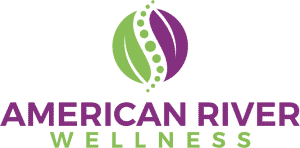
Drug and alcohol screening is crucial to ensuring workplace safety, especially for positions regulated by the Department of Transportation (DOT). Despite its importance, here’s a lot of misinformation about DOT drug and alcohol screening. This blog will debunk five common myths and provide clear, accurate information about the screening process.
Myth 1: Drug Tests Do Not Check for Alcohol
Fact: Drug tests can check for alcohol, but not all of them do.
DOT drug testing regulations require testing for specific substances, including alcohol. These tests are designed to detect recent use of substances that could impair an individual’s ability to perform safety-sensitive duties.
What does a drug screen consist of?
A comprehensive DOT drug and alcohol screening test consists of two main components:
- Urine Drug Test: This test checks for the presence of drugs in the system, such as marijuana, cocaine, opioids, amphetamines, and phencyclidine (PCP).
- Breath Alcohol Test: This test measures the concentration of alcohol in the breath.
Some people may wonder, does a 5-panel drug test for alcohol? It does not. A 5-panel drug test specifically aim to detect the presence of marijuana, cocaine, amphetamines, opioids, and phencyclidine (PCP). For DOT drug and alcohol testing, the test for alcohol is a separate test.
Myth 2: Only Illegal Drugs Are Tested
Fact: DOT drug tests screen for both illegal and prescription drugs.
The DOT’s drug testing panel includes both illegal drugs and certain prescription medications that can impair an individual’s ability to perform safety-sensitive tasks.
It’s important to note that if an individual is using a prescription medication, they must inform the Medical Review Officer (MRO) who reviews the test results. The MRO will determine if the prescription is valid and if the medication poses a safety risk.
Myth 3: Drug Screening and Drug Testing Are the Same
Fact: While often used interchangeably, drug screening and drug testing can refer to different processes.
Drug screening typically refers to the initial process of detecting potential drug use. If the screening indicates the presence of drugs, a more comprehensive drug test is conducted to confirm the results. This confirmatory testing is more detailed and accurate, ensuring that false positives are minimized.
Myth 4: Drug Tests Only Need to Be Taken Once
Fact: DOT regulations require ongoing, random drug and alcohol testing.
Some people believe that once they pass an initial drug test, they won’t need to take another one. However, the DOT has stringent regulations requiring ongoing testing to ensure continuous compliance and safety.
Why is ongoing testing required?
Ongoing testing helps ensure that employees in safety-sensitive positions are performing their duties without the influence of drugs or alcohol, thereby protecting both the employees and the public.
Myth 5: Drug and Alcohol Testing Infringes on Personal Privacy
Fact: DOT drug and alcohol testing is conducted under strict privacy regulations to protect individuals’ rights.
DOT regulations ensure that the collection and testing processes are conducted with respect for individuals’ privacy. For example:
- Confidentiality: Test results are confidential and are only shared with authorized personnel.
- Controlled Collection: Urine samples are collected in a private setting with procedures in place to prevent tampering while maintaining dignity.
- Clear Protocols: Breath alcohol tests are administered by trained personnel using approved devices, ensuring accuracy and privacy.
Learn about the DOT SAP program here & the specifics of the return to duty process for flight crews, truck drivers, and mariners here.
